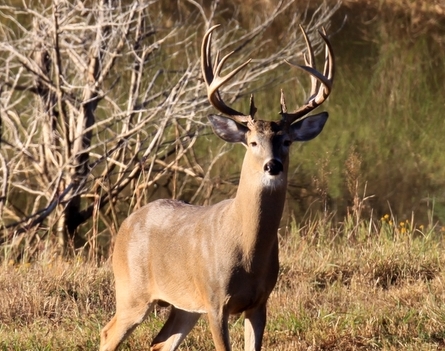Anthrax is an infectious disease of white-tailed deer, humans, and other mammals. The bacterium Bacillus anthracis is responsible for anthrax. The disease is almost always fatal in deer and livestock. A common weather pattern is responsible for anthrax outbreak: a warm, rainy period in late spring followed by a dry period into the summer. Outbreaks are often documented in July-September.
The three types of infections possible are skin, lungs, and stomach. White-tailed deer typically inhale the virus while feeding close to the ground or by ingesting it from infected vegetation. High numbers of insects are a contributing factor for anthrax outbreaks.

The Anthrax Disease
While one or a few bites from biting flies probably won’t transmit the disease, if an animal like a deer is constantly being bit then wildlife and domestic animals are much more prone to being infected. It’s simply a product of the number of minor wounds, openings found on the body, though inoculation through open wounds is a very minor route of anthrax infection. Far more commonly, the bacillus enters the body through inhalation or ingestion. It can also enter a deer’s body through intact undamaged skin.
Flies are not a specific vector of anthrax, but they can physically acquire the spores from walking and feeding on an infected animal. Then they can land on a healthy animal and mechanically transmit the spores. Flies with spores often unknowingly deposit the spores on vegetation, which are consumed by wildlife, and then anthrax is contracted.
Anthrax Outbreaks
Anthrax bacteria reside in the soil in many regions. During the warm summer months, when there are rapid changes such as alternating periods of rain and drought, spores of the bacterium can be found at the soil surface and on low-level vegetation where they are readily available for ingestion by white-tailed deer, livestock and other wildlife. The incubation period is between 1 and 10 days. After the onset of clinical signs, animals die very rapidly, in as little as 3-4 hours.
Clinical signs of the anthrax disease include depression, lethargy, and staggering; animals may try to get to water. Live animals often are not found. The first indication of an outbreak on an individual property typically is when deer carcasses are located. Often, the carcass will appear to be from an otherwise healthy-looking animal with no signs of prolonged sickness.
In humans, anthrax is treatable at early stages with antibiotics, but it can be fatal if it is not treated. Livestock can be vaccinated; producers in anthrax areas typically vaccinate. It is difficult and often not feasible to vaccinate wild animals such as deer. The anthrax disease can reduce a deer population on a ranch or lead to a deer die-off in an entire area, but the disease tends to rear it’s ugly head in well-known hot spots every year or every couple of years.